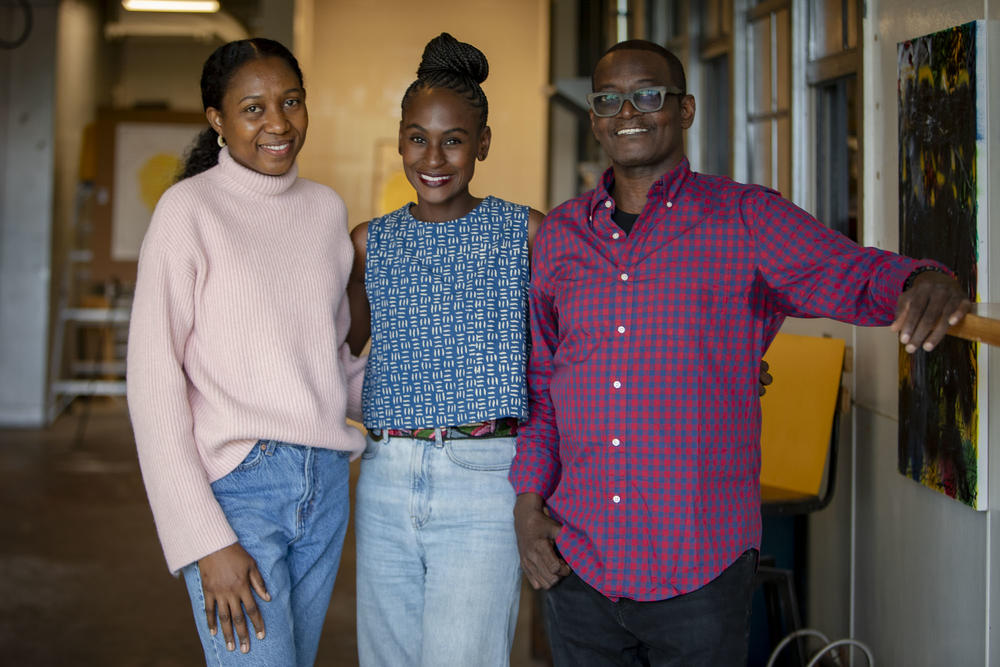
Caption
From left: Taiye Idahor, Lauren Tate Baeza, and Kainebi Osahenye photographed at Ponce City Market.
Credit: Isadora Pennington / Rough Draft Atlanta

From left: Taiye Idahor, Lauren Tate Baeza, and Kainebi Osahenye photographed at Ponce City Market.
Over the past 10 weeks, two Nigerian artists have been hard at work in makeshift art studios at Ponce City Market. As of last weekend, Atlanta BeltLine is the new home of "LagosAtlanta: Sister City Rising," a special public art exhibition by renowned Lagos-based artists Taiye Idahor and Kainebi Osahenye, curated by the High Museum of Art’s Lauren Tate Baeza.
Baeza, who serves as the Fred and Rita Richman Curator of African Art for the High, is uniquely qualified to facilitate the installment of works by these artists. Lagos was designated as a sister city for Atlanta by Mayor Maynard Jackson 50 years ago in 1974. Today, Atlanta is home to the fifth-largest Nigerian population in the United States and the largest in the Southeast.
This residency program celebrates a long-lasting cultural exchange between the two cities. The chosen artists have been fully immersed in Atlanta culture during their residency and have recently unveiled two new public art pieces along the Westside Trail of the Atlanta BeltLine. These works are a focal point of the 2024 Art on the Atlanta BeltLine season.
“I’m pleased to present this project on the BeltLine — an important site for community engagement and reconnection in the City of Atlanta,” said Baeza. “The completed installations by Taiye Idahor and Kainebi Osahenye will join other important public works by Nigerian artists—such as Jimoh Buriamoh’s Meeting of Elders in Howell Park and Yinka Shonibare’s Wind Sculpture (IV) at Centennial Yards—that dot Atlanta’s public art landscape, providing the opportunity to connect those dots and commemorate a long history of creative engagement between the two geographies.”
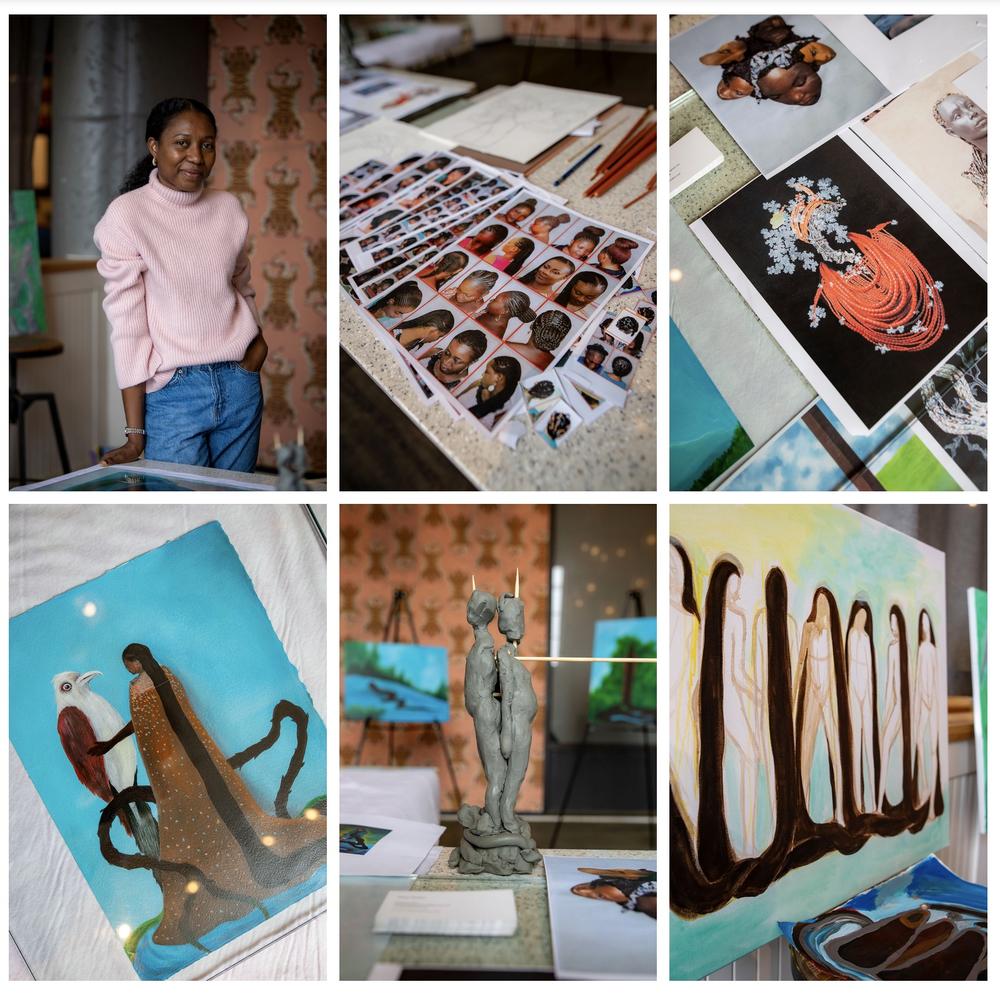
Scenes from the studio of Taiye Idahor.
Artist Taiye Idahor’s work explores identity, family histories, and the expectations and perceptions of femininity. She is a draftswoman, sculptor, and multimedia collage artist who has works included in the permanent collections of the Princeton University Art Museum, the Brooklyn Museum, and Zeitz MOCAA, to name a few.
“Residencies for me are always a great opportunity to unpack thoughts and ideas in a different way because a new environment almost always alienates me from my usual thought process, especially with materiality,” said Idahor. “Being at the BeltLine will certainly present these. However, this is a public space, which means more people interacting with the work and possibly its creation, which makes it interesting new territory. And I’m a bit anxious. But from experience, these can be good feelings to create with, so I quite look forward to it.”
Meanwhile, Kainebi Osahenye’s large-scale neo-expressionist paintings and sculptures crafted from repurposed and discarded objects play upon the topics of spirituality, consumerism, and the environment. He has participated in residency programs in Asia, Europe, Africa, and the United States.
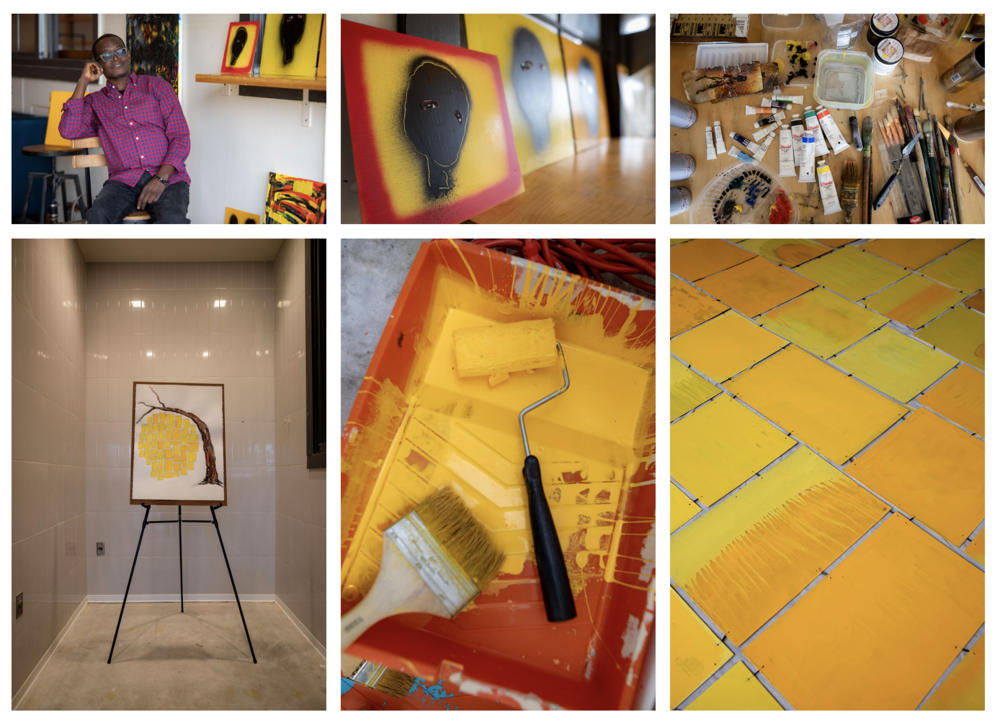
Scenes from Kainebi Osahenye’s studio at Ponce City Market. (Photographs by Isadora Pennington)
“Through art residency programs, artists can wander beyond set boundaries in pursuit of a fresh experience. The creative environment that it provides enables this tendency.” explained Osahenye. “With the LagosAtlanta Art Residency, I will bring the Lagos attitude to encounter Atlanta in a poetic dialogue that will go in the direction of pop culture. My interest will be to create a piece of music utilizing the language of sculpture. Additionally, I will be open to understanding what lies beneath the fancy facade of this ‘beautiful black city’ that is Atlanta, hoping that the experience will prove worthy of the engagements.”
“Ivbieva” means twins in the Edo language of Southern Nigeria. Depicting twin sisters, the steel figures are connected by winding hair. The use of hair to connect the two is an homage to the importance of hair as symbolic of feminism and carries significance in their shared genetic code. The image also touches on the relationship between Atlanta and Lagos as sister cities. By positioning this piece in the lush greenery of the Westside Trail, the artist connects femininity with themes of reproduction and progeny.
Designed as a brutalist abstraction of falling pollen, “Aesthetics of the Yellow Bloom” is a commentary on the ways in which humans experience beauty and harm from the nature that surrounds us. Conceived during Osahenye’s first visit to Atlanta in the spring, the work employs the color yellow and aluminum as a medium that connects with his broader artistic practice and touches on themes of industrialism and consumerism. The arching structure that is displaying these panels was modeled after a nearby tree arching to reach the sunlight beyond the tree canopy above.
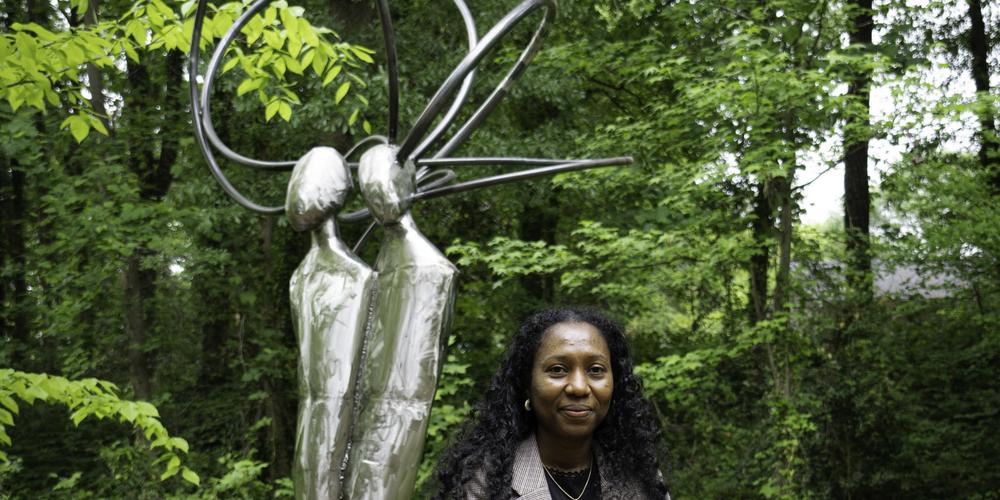
“Ivbieva,” 2024 by Taiye Idahor.
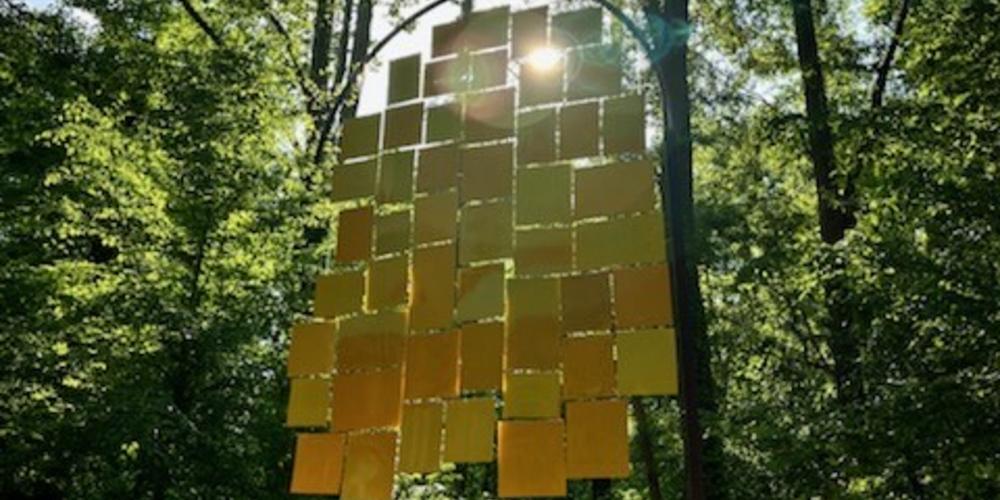
“Aesthetics of the Yellow Bloom,” 2024, by Kainebi Osahenye.


This story comes to GPB through a reporting partnership with Rough Draft Atlanta.